Identity Guard® Reviews
A robust suite of features on a well-designed platform
SafeHome.org may receive compensation from some providers listed on this page. Learn More
We may receive compensation from some providers listed on this page. Learn More
A robust suite of features on a well-designed platform
Overall, Identity Guard is an excellent identity theft protection service. It provides access to industry-standard credit monitoring and identity protection features, including up to $1 million in identity theft insurance, triple-bureau monitoring, Social Security number monitoring, and dark web monitoring.
It also provides access to extra features, such as home title monitoring, social media monitoring, criminal and sex offender monitoring, 401(k) investment monitoring, and USPS address change monitoring. Plus, it comes with a password manager, which is great for protecting your logins.
Some of its plans are a bit pricey if you pay month-by-month, and we did experience a few minor issues while using the provider’s app. But, overall, Identity Guard provides very good value — plus, it also backs all yearly plans with a generous 60-day refund.
Identity Guard has three tier-based subscriptions: Value, Total, and Ultra. It also offers two types of plans for each subscription: Individual and Family. The Individual plan covers just one adult, while the Family plan covers five adults and an unlimited number of children (it’s actually one of the best identity theft protection services for families out there). It also backs all long-term plans with a generous 60-day money-back guarantee.
| Service | Value | Total | Ultra |
|---|---|---|---|
| $1 Million in Identity Theft Insurance | Yes | Yes | Yes |
| Dark Web Monitoring | Yes | Yes | Yes |
| Password Manager | Yes | Yes | Yes |
| Bank Account Monitoring | No | Yes | Yes |
| Credit and Debit Card Monitoring | No | No | Yes |
| 401k and Investment Account Monitoring | No | No | Yes |
| Criminal and Sex Offense Monitoring | No | No | Yes |
| USPS Address Change Monitoring | No | No | Yes |
| Title Monitoring | No | No | Yes |
| Credit Protection | No | Yes | Yes |
| 3-Bureau Credit Monitoring | No | Yes | Yes |
| 3-Bureau Annual Credit Report | No | No | Yes |
| Cost per Month (for Individuals) | $8.99 per month | $19.99 per month | $29.99 per month |
| Cost per Month (for Families) | $14.99 per month | $29.99 per month | $39.99 per month |
| Cost per Year (for Individuals) | $80.04 per year ($6.67 per month) |
$143.88 per year ($11.99 per month) |
$215.88 per year ($17.99 per month) |
| Cost per Year (for Families) | $120 per year ($10 per month) |
$215.88 per year ($17.99 per month) |
$287.88 per year ($23.99 per month) |
Pro Tip: For a more in-depth look at Identity Guard’s pricing, check out our full guide.
Identity Guard provides good value, but its month-to-month prices could be a bit steep for some people. That said, if you’re looking to save money and are okay with basic identity protection, the Value subscription costs only $6.67 per month if you get the yearly plan — this is right in-line with other low-cost ID monitoring offered by brands like LifeLock and Zander.
We also think that the Total plan at $11.99 per month if paid yearly is a good middle ground. It has all the features of the Value plan, but it adds bank account monitoring and triple-bureau monitoring. But we ultimately decided to go with the Ultra subscription since we wanted to test all of the provider’s features.
When we picked our desired subscription, we were prompted to create an Identity Guard account by entering our email address. After that, we had to enter our name, address, personal information, and finalize the purchase.
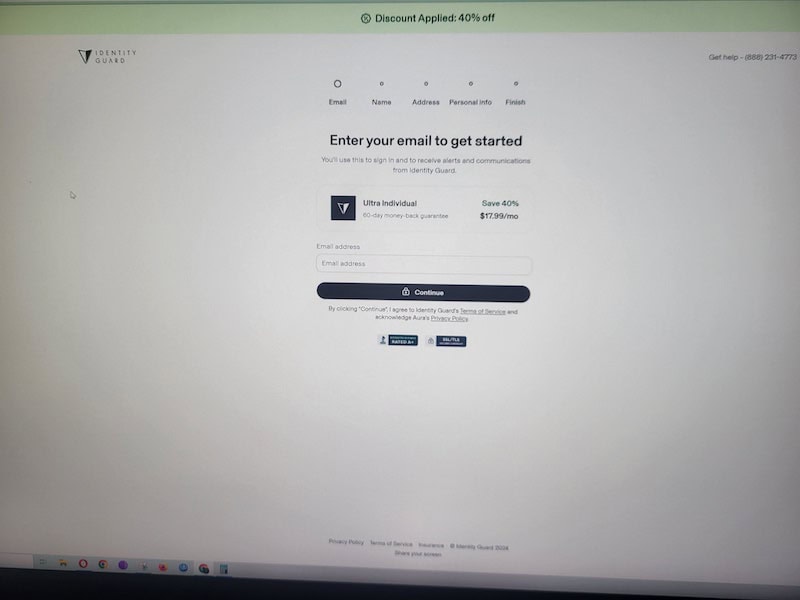
Signing up for Identity Guard.
Once that was done, we signed in and landed on our dashboard. Immediately, a short, animated tutorial popped up. We can’t tell you how much we appreciate this. So many services out there sort of dump you into a dashboard you have to figure out on your own, but it’s clear Identity Guard takes user experience seriously.
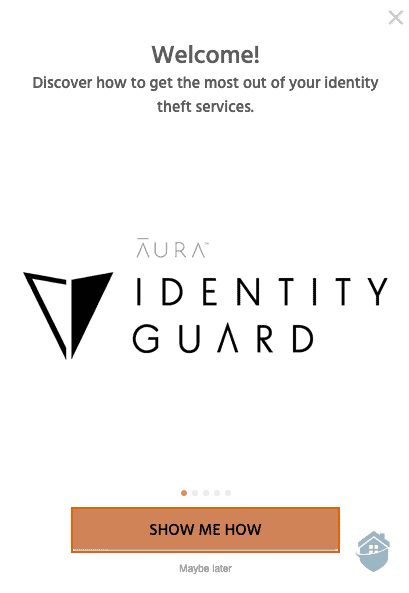
Identity Guard App
The tutorial started by telling us to add items to our “watchlist.” Identity Guard already imported the information we provided during enrollment, but there’s a lot more it can monitor for us. Then, it told us to verify our identity, saying that many of the advanced features require identity verification. This takes less than five minutes and allows access to everything.
Next, it told us to download the app, and finally to click on the financial transactions tab to give Identity Guard access to our bank for monitoring.
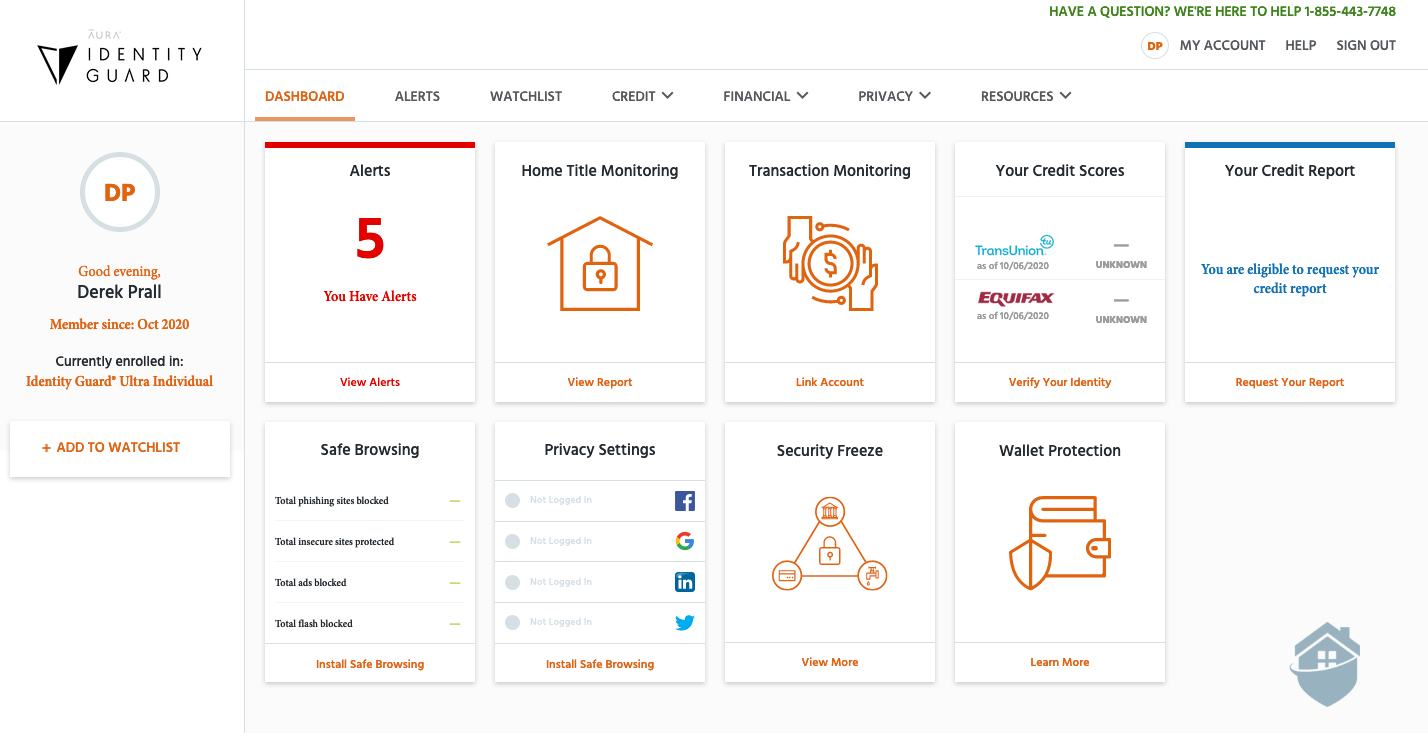
Identity Guard Dashboard
The watchlist is basically Identity Guard’s repository of all the personal information it will monitor. Since we went with the Ultra plan, this list is pretty extensive and includes credit card numbers, passport information, and health insurance IDs. Once we clicked into that section, we opted to watch a quick video on how to add additional elements.

Identity Guard Intro Video
Again — we really appreciate services that take user experience seriously. Although it sometimes feels like hand-holding, these little bits of guidance along the way can help orient someone who might not be too tech-savvy. Bonus points for Identity Guard there.
After the video, we started entering all of the information we wanted monitored. This process is a little time-consuming, but overall pretty straightforward thanks to Identity Guard’s intuitive interface.
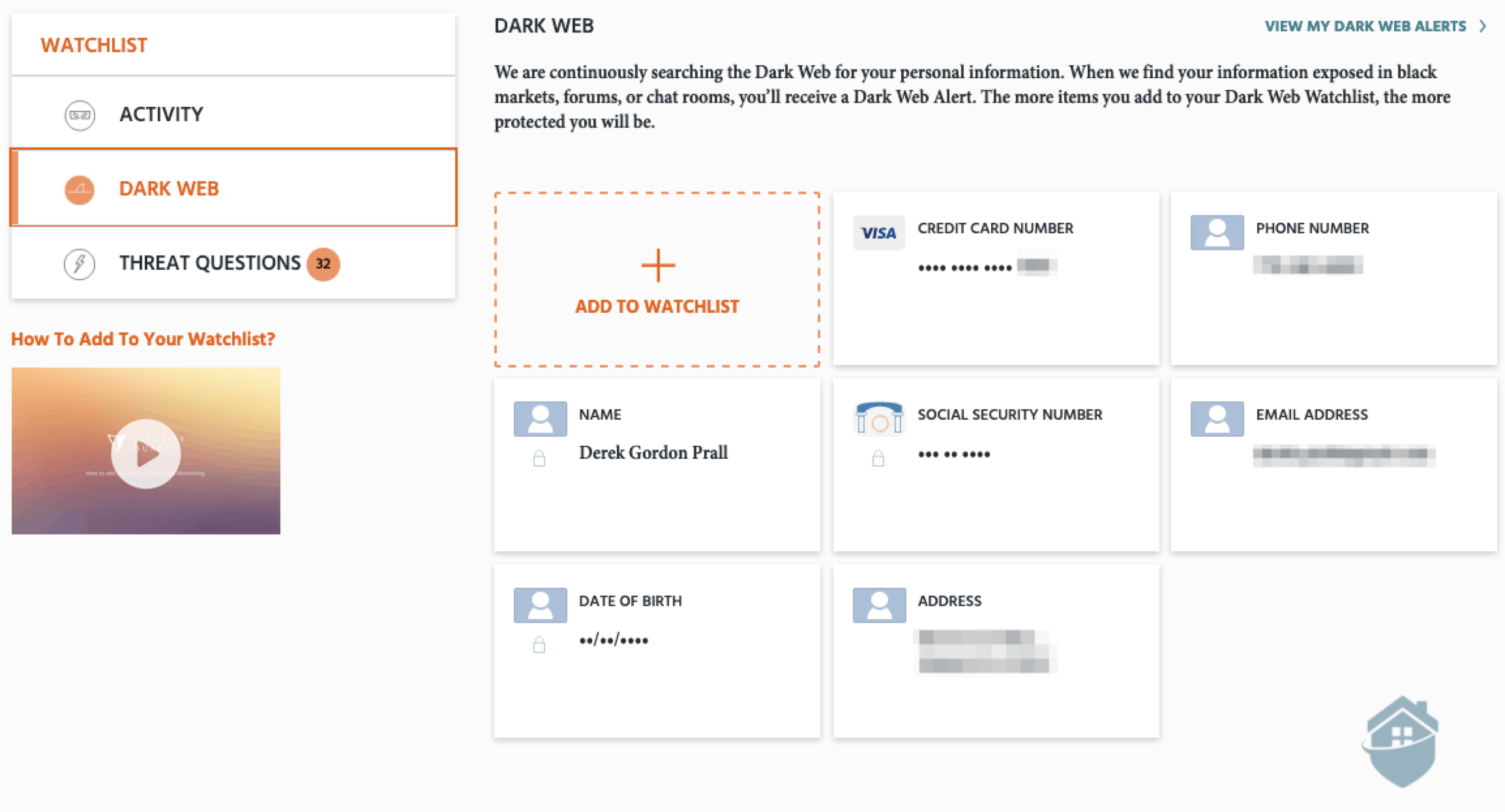
Identity Guard Watchlist – Dark Web Monitoring
In this section, we found Identity Guard also offered a pretty unique but slightly confusing feature. Under the “threat questions” tab, we were asked 32 questions about our personal life, our behaviors, our consumer habits, and our healthcare. Honestly, this isn’t something we typically see from other ID theft protection services.
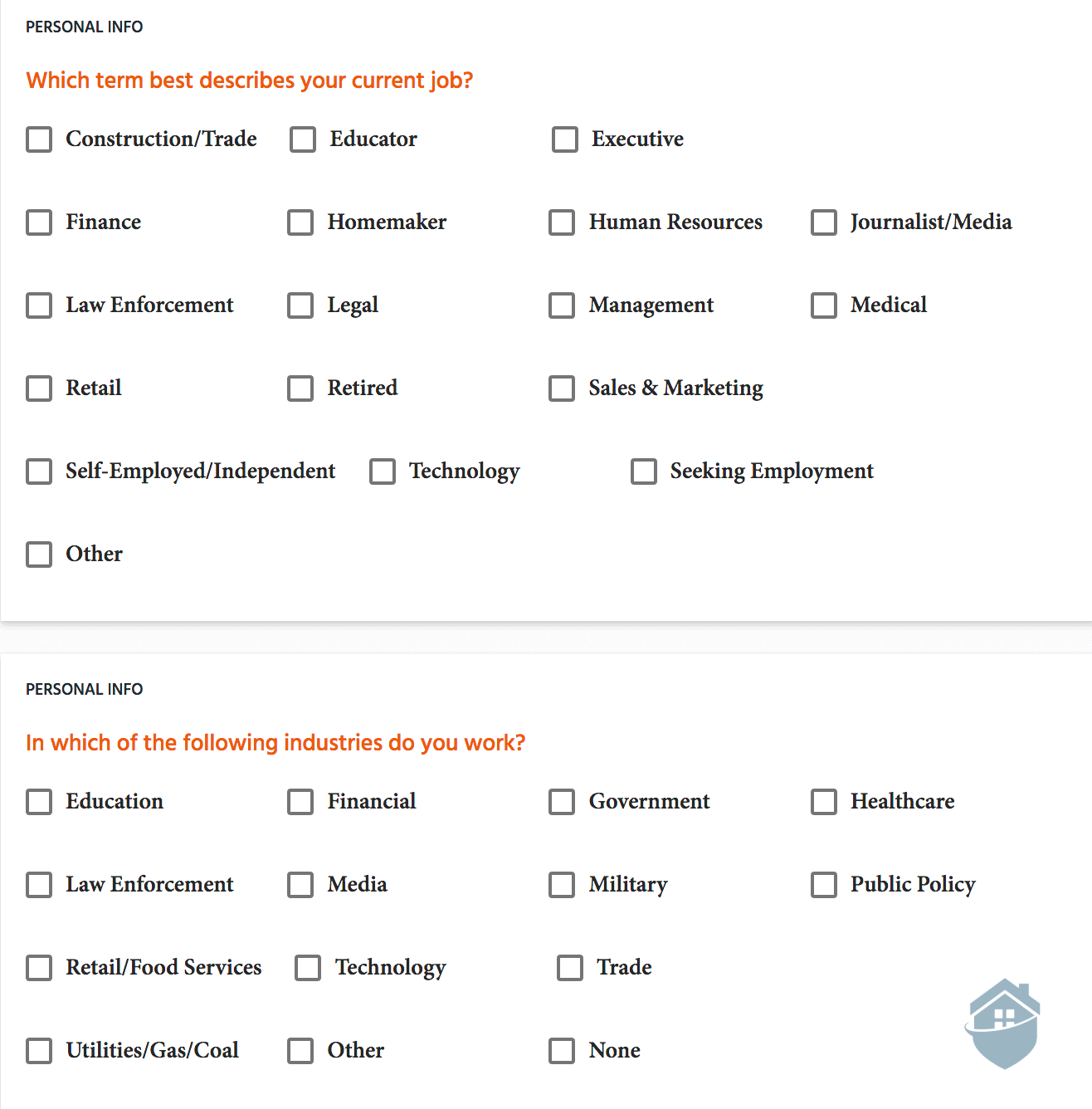
Identity Guard Personal Information Breakdown
Once we were done here, we were a little confused. At first, it wasn’t exactly clear what the answers to these questions actually did. But we learned that Identity Guard uses this information to round out their threat alerts. That is, they will only send a threat alert that’s specific to you, which we think is nice, but then, a little more insight would have been appreciated. For instance, how exactly does it tailor fit notifications? And could this feature cause us to miss potentially useful alerts? We were left in the dark about those things.
And next we found our Risk Management Score under the Resources table.
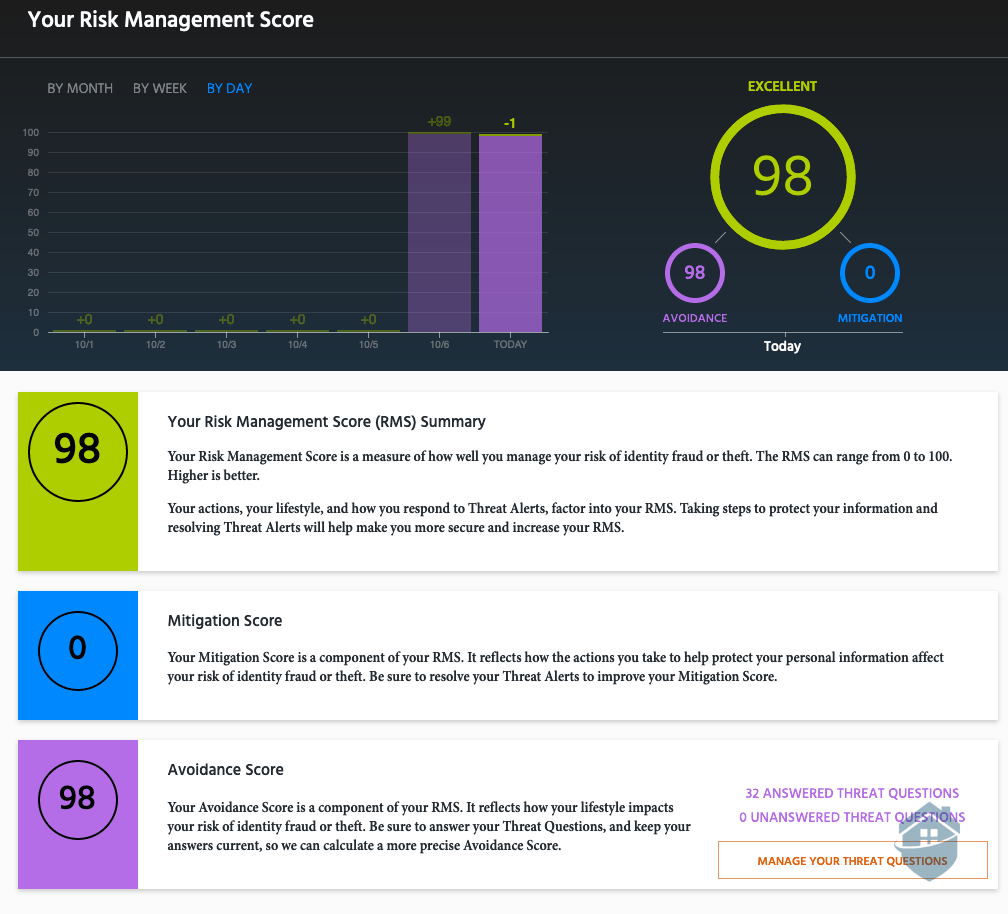
Identity Guard Risk Management Score
This is a pretty cool feature that tracks our behaviors over time and lets us know how secure or how risky our behaviors are.
Once we wrapped up here, per the tutorial, it was time to verify our identity.
Under the “Your Credit Scores” tile on the dashboard, we found a “verify your identity” link. This helps Identity Guard verify we’re really who we say we are by asking a series of multiple-choice questions generated from what personal information was found in public databases. This additional layer of protection would prevent bad actors from accessing our sensitive financial and credit information.

Identity Guard – Successful Login
At this point we were able to access our VantageScore Credit Score. You might be confused seeing only two bureaus reporting here, since you paid for three-bureau credit monitoring. Don’t worry, though, you’re not getting ripped off. You’ll still get monitoring from all three major credit bureaus.
FYI: VantageScore was developed in 2006 by Experian, TransUnion, and Equifax to evaluate consumers’ likelihood of repaying borrowed money, competing against the better-known FICO score. It’s used by lenders, landlords, and other financial institutions to make decisions on creditworthiness. 2
Additionally, now that our identity was verified, we had access to our credit report. Here is where that three-bureau monitoring comes into play. If you’ve never seen your full credit report, it can be a little daunting since it has a ton of information on it.
Don’t worry though, Identity Guard breaks everything down in meaningful ways, and tells you what to look out for in each section — personal information, accounts, inquiries, public records, collections, and consumer statements. Honestly, this is the best credit breakdown we’ve seen since we reviewed IdentityForce.
Generally, in these reports, we recommend being on the lookout for things that seem out of the ordinary or unfamiliar to you. That might include credit cards or credit lines you don’t remember having, incomplete or incorrect personal information, or credit checks you didn’t authorize. You should also be on the lookout for credit accounts that list you as cosigner, among other things, of course.
While it seemed a little out of sync, the tutorial told us that next we were supposed to download the app. We grabbed our phone and headed over to the app store to do just that.
After the really robust desktop experience, we have to say, we were pretty underwhelmed by the app. Like many services, Identity Guard’s app felt like an afterthought, with very little consideration given to the user experience.
Is the app functional? Sure. Is it well designed? Unfortunately, no. We could cycle between “reports,” “alerts,” “watchlist” and “settings,” but there was no dashboard to speak of and no clear flow to anything. For someone that only wants to use the app as a vehicle for receiving alerts it’ll do, but Identity Guard is clearly primarily a desktop service.
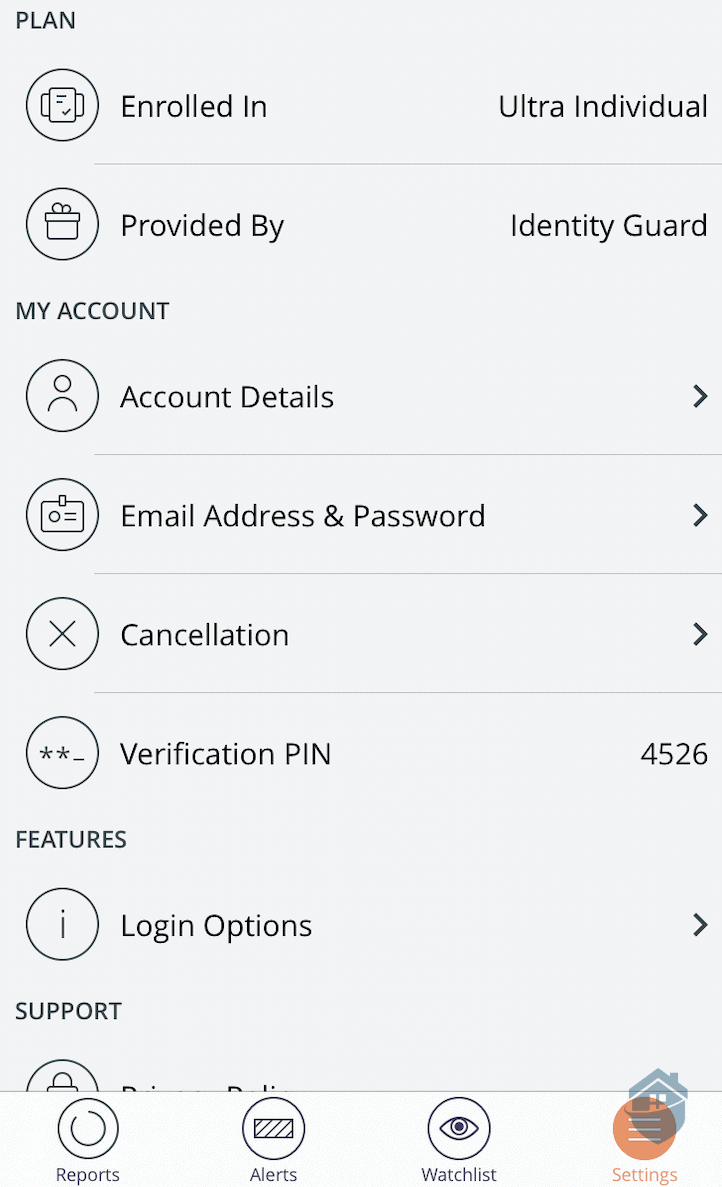
Identity Guard App Settings
Now that we had the app all set up, it was time to complete the steps listed out in the tutorial by linking Identity Guard to our financial accounts. To do that, we clicked on “link account” under the transaction monitoring tile.
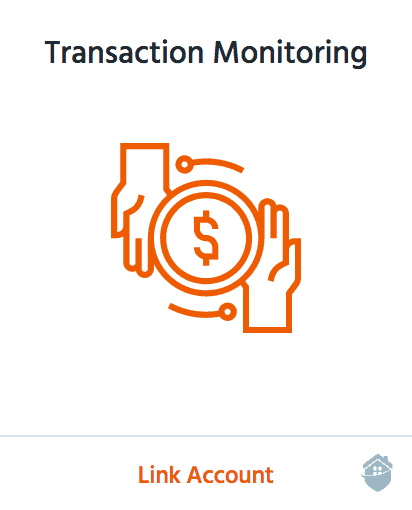
Identity Guard Transaction Monitoring
Like most identity theft protection services out there, Identity Guard uses a third-party service to quickly link to financial accounts — meaning we didn’t have to manually enter a list of account and routing numbers.
Did You Know: Third-party vendors like the one used by Identity Guard utilize end-to-end encryption, making it so data can only be read on two ends — by the sender and the recipient.3
Once we entered our login credentials for our banking institution to connect to Identity Guard, we were prompted to set the thresholds for our alerts for different kinds of transactions — account transfers (which includes debit cards), credit card purchases, loans, investments, and “other” — meaning that Identity Guard would notify us any time any transaction was made over a certain amount.
We’re not really big spenders, so we always prefer to keep all of these thresholds pretty low. Even though we get more alerts this way, we’d rather be safe than sorry. That said, you can dial-in your financial monitoring settings however you wish. We think you’ll like the functionality and adaptability here.
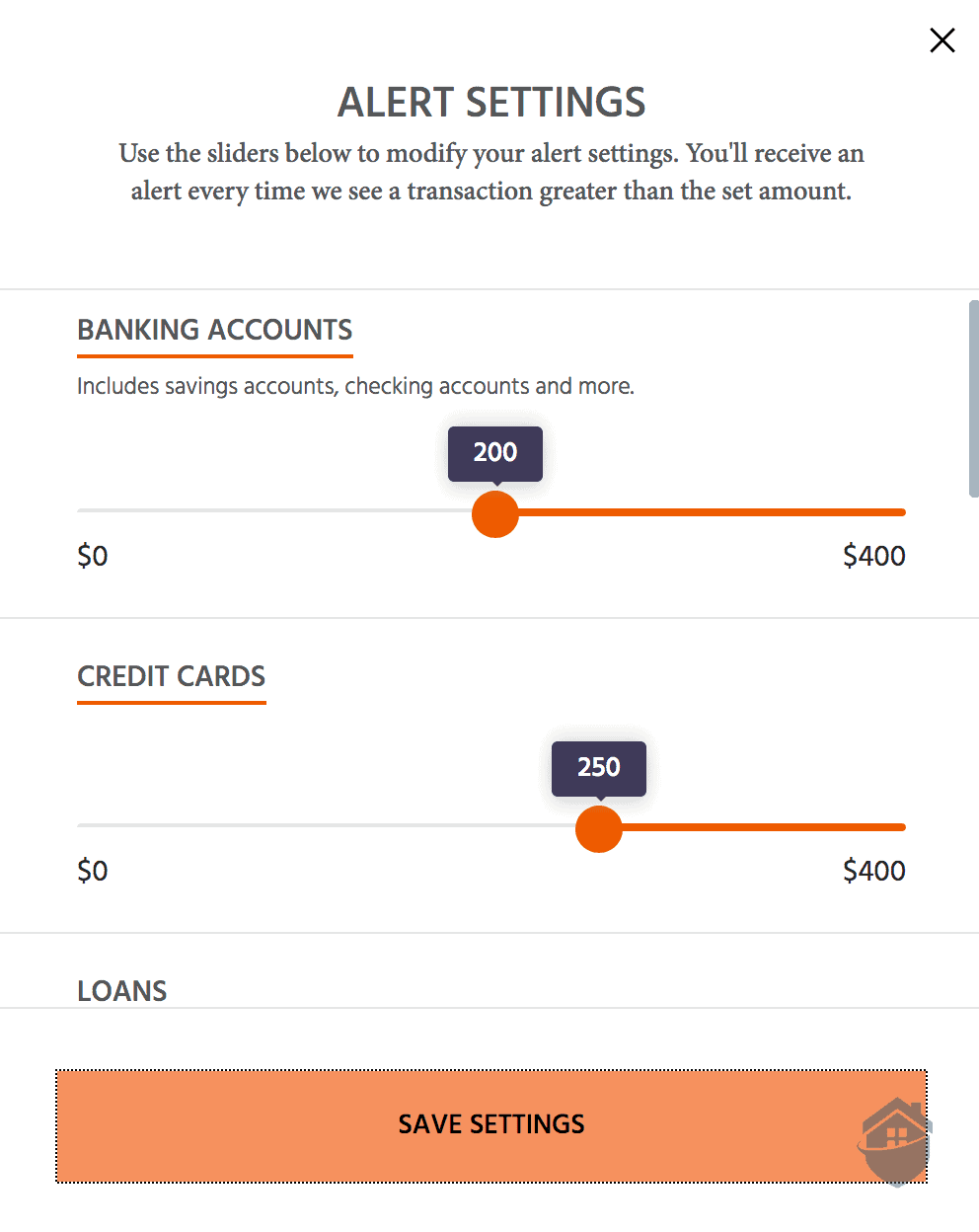
Identity Guard Banking Alerts
Once we set our thresholds, we were directed to our transaction monitoring page. We can’t show you this because there’s too much sensitive information on it, but take our word for it — it’s really detailed and highly organized. We could swap between accounts with ease and see the details of every transaction — who it was for, when it was made, and how much it was for.
So that was it for the setup items in the tutorial, but since we purchased the top-tier plan, there were still some extra features to activate. Let’s take a look at those now.
The first perk we found was home title monitoring. While home title theft is a fairly rare occurrence,4 it’s still a threat you should protect yourself against. Believe it or not, an enterprising thief can sometimes steal enough personal information to forge a deed to change the ownership of a property’s title which they can then sell or borrow against.5
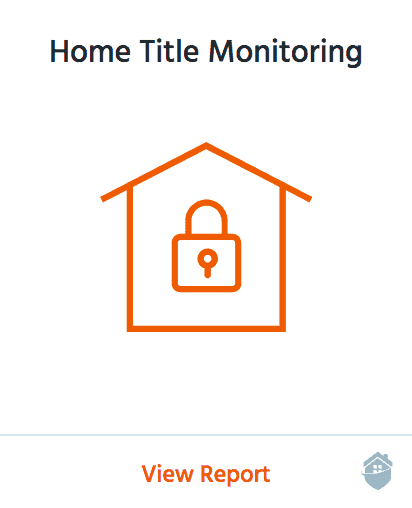
Identity Guard Home Title Monitoring
In this section, we had access to all of the tax information on our property down to the latitude and longitude. Good news if we ever need to get home via sailboat and sextant. We also had access to the deed information, which can come in handy during tax season. Another piece of good news is there was nothing to activate here — Identity Guard began monitoring our home from the information we gave them when we set up our account.
Next, we had to “install safe browsing,” but we ran into a bit of a snag here. When we clicked the link, we were asked to download a .xpi file, but since we’re on a Mac, the file wasn’t executable.
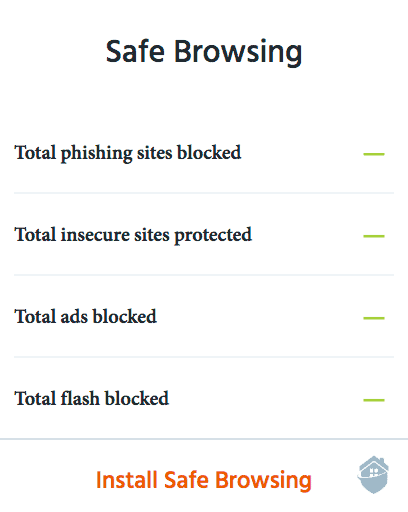
Identity Guard Safe Browsing Feature
If you run into the same issue, try dragging the file over into your web browser window. If you’re on a platform like Firefox or Chrome, it should automatically install as a plug-in.
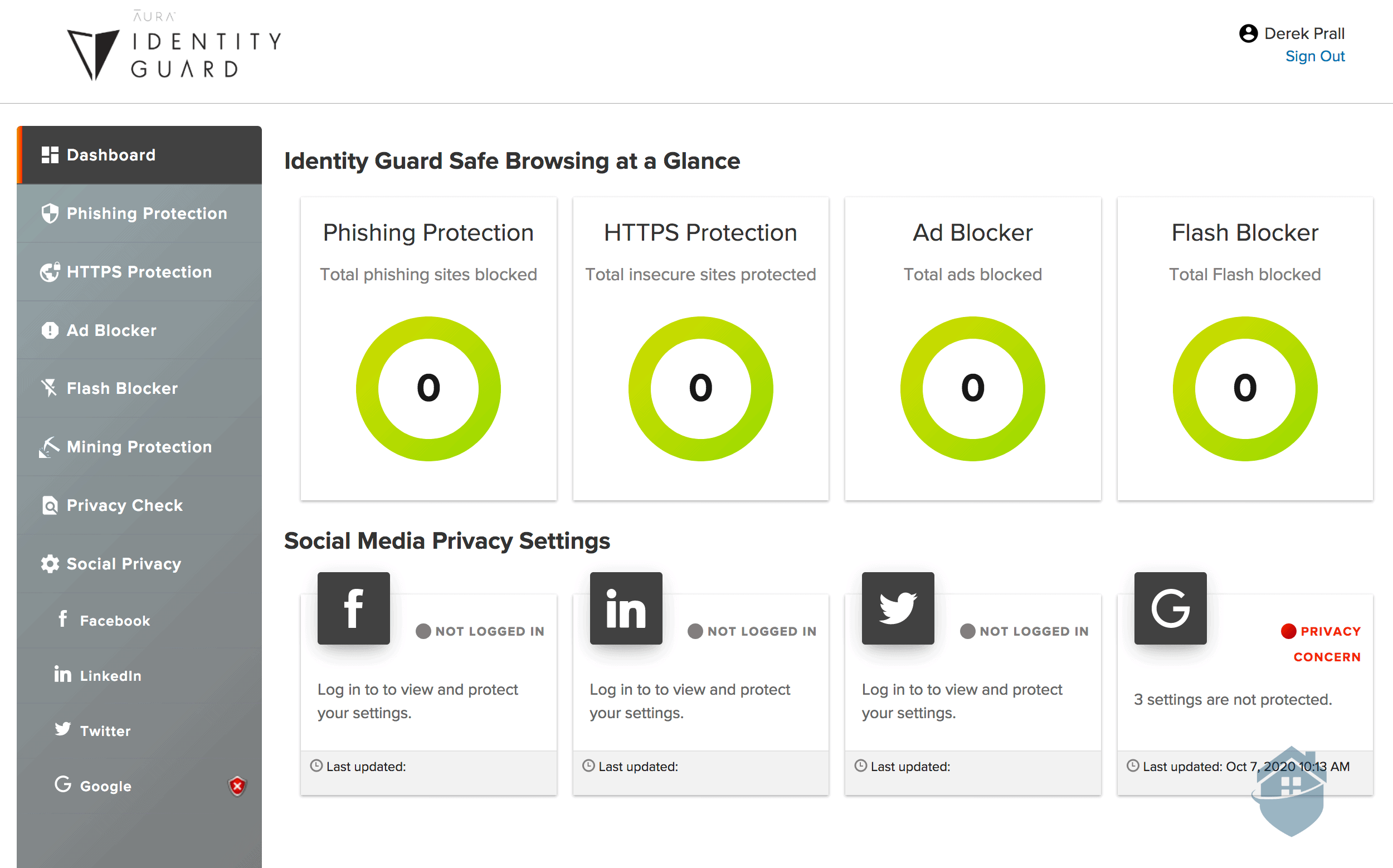
Identity Guard Safe Browsing Report
This plug-in is super-robust and includes protections like ad blockers, HTTPS protections, phishing email protections, and even mining attempt protections. The latter is related to cryptocurrencies — as they became more popular, websites have popped up to mine them. Essentially these sites run scripts without authorization to exploit the power of other people’s hardware which ends up killing the performance of the impacted machine.
Did You Know: Cryptocurrency relies on decentralized networks using blockchain technology, which is essentially a distributed ledger maintained over a distributed network. Their big appeal is that they aren’t issued by any central authority, making them immune to market manipulations. In theory, anyway.6
Here we could also link to our social media channels, and this was the second time Identity Guard let us down. Unlike more robust social media monitoring functionality, the only platforms Identity Guard offered protection on were Facebook, LinkedIn, and Twitter. We don’t use the latter two, and we were unable to connect to the former since Identity Guard doesn’t support Facebook’s new layout. We could switch back to a previous iteration, but we’d rather see Identity Guard update their service to stay current with the platform. This wasn’t a deal-breaker, just something to keep in mind.
Interesting to note, though, included in this section is Google. By linking Identity Guard to our Google account, it automatically updated our privacy settings to prevent Google from tracking our movements, saving information from our contacts, saving our personal information, and sending us personalized ads. We’re sure some hardcore privacy folks will really appreciate this, but we sort of like syncing our Google calendar to other services. Luckily each one of these protections could be toggled on and off, which we liked.
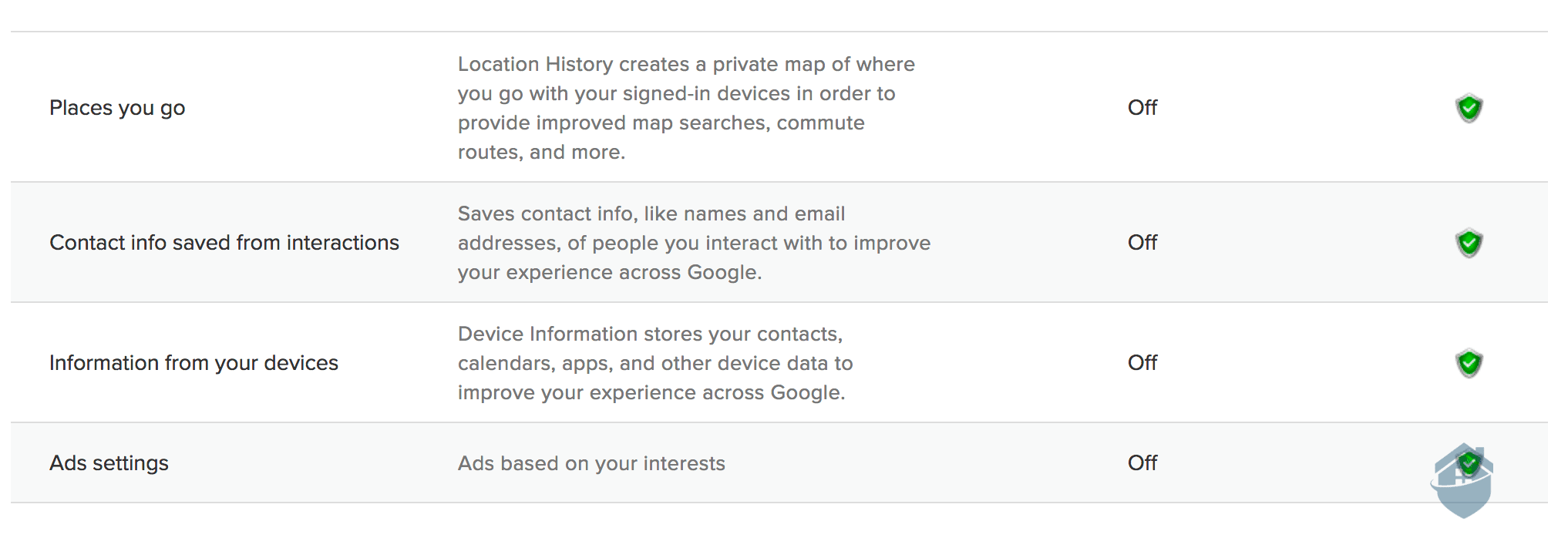
Identity Guard Browsing Settings
Next on the punch list was Identity Guard’s lost wallet protection. Similar to the title protection, there was nothing to set up here. This is simply a service Identity Guard offers to help customers replace important items should their wallet (or purse) go missing. Figuring out how to cancel and replace everything is a huge headache, but Identity Guard will immediately get one of their representatives on it to replace and restore everything.
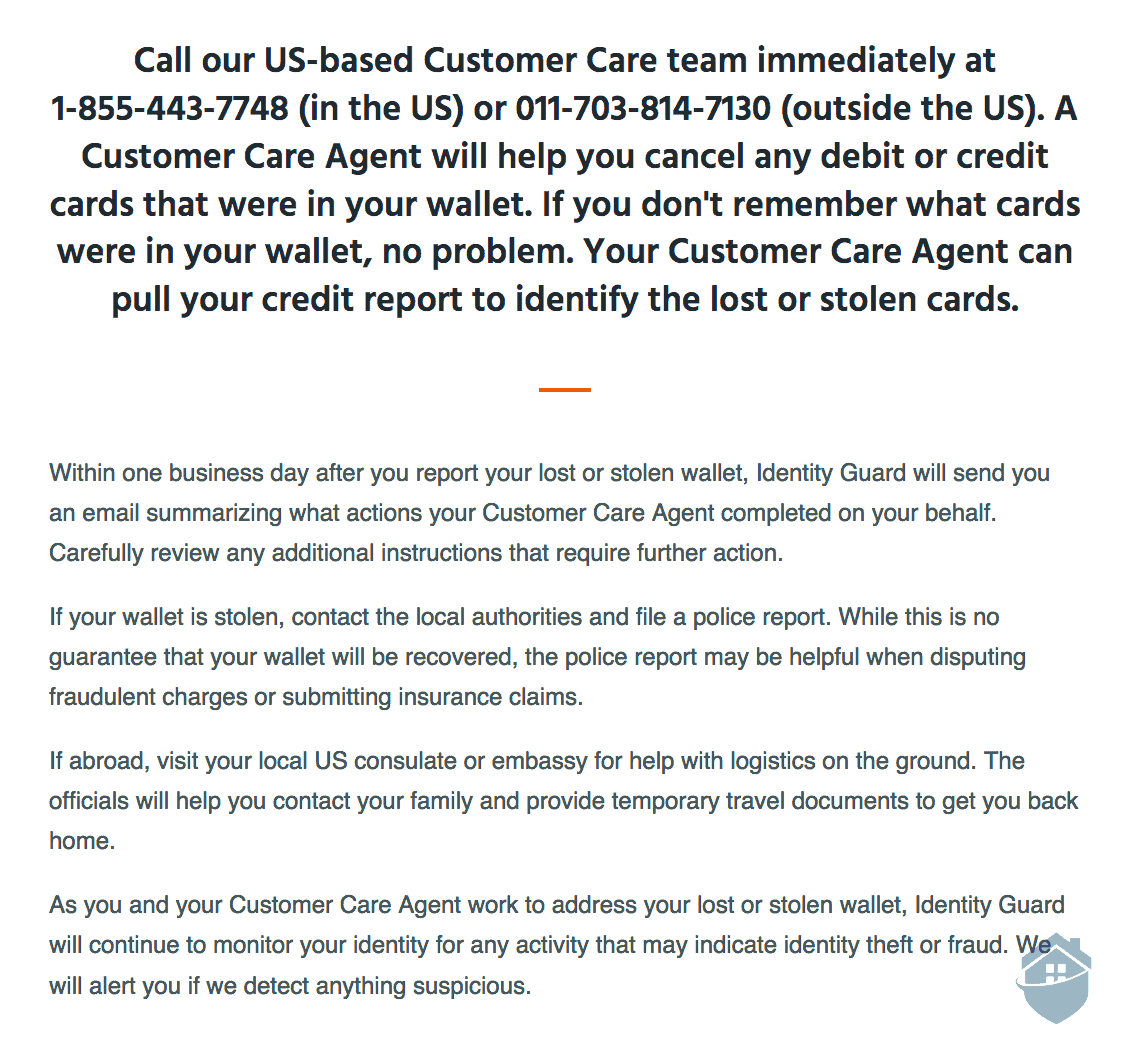
Identity Guard Customer Support Sample Instructions
The final item in the dashboard to look at was the security freeze tile. While Identity Guard can’t place freezes for you, it certainly walks you through the process in the most complete way we’ve seen thus far.
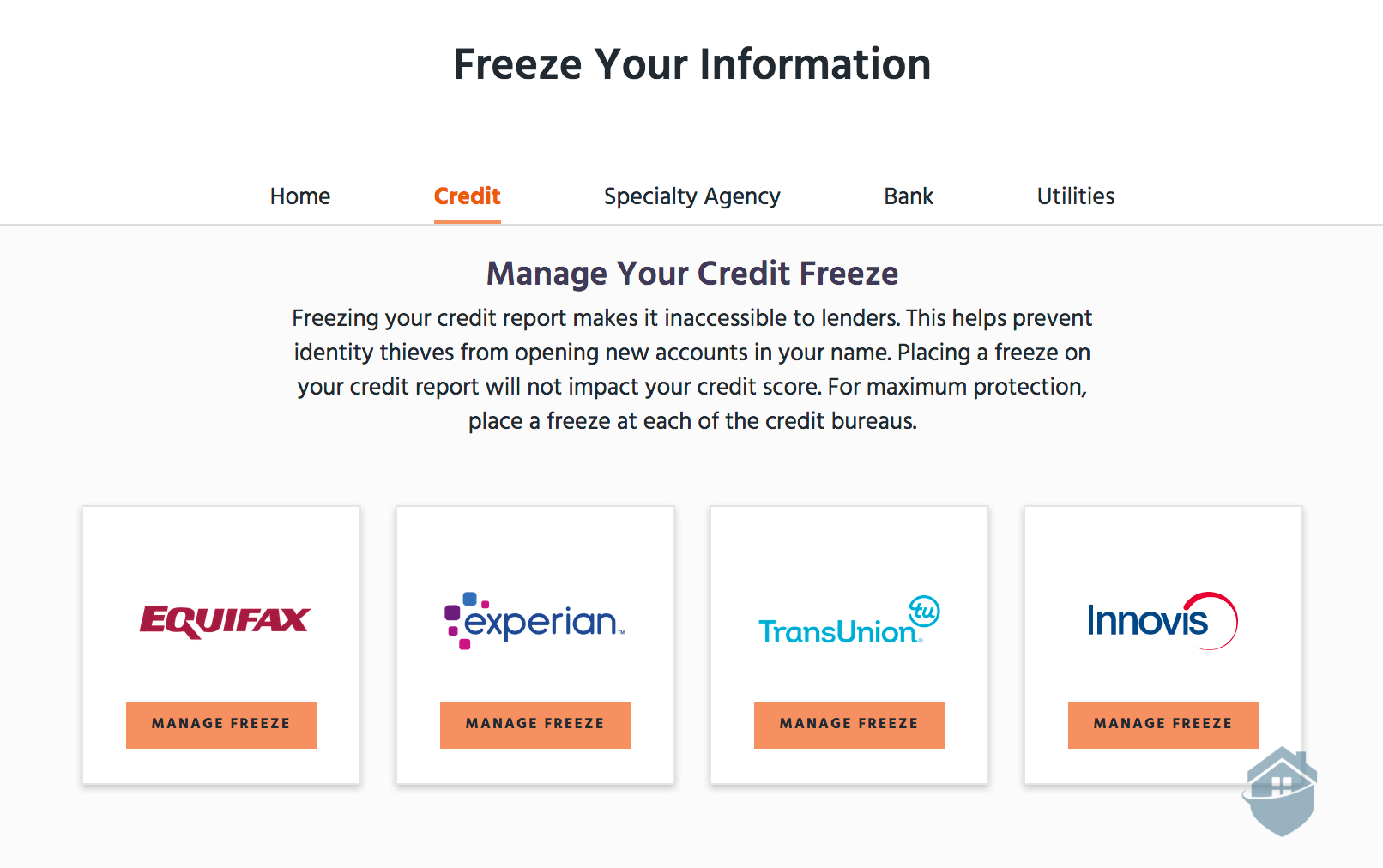
Identity Guard Credit Freeze
A quick word on security freezes — this is probably the single best thing you can do to help protect yourself from identity theft. Freezing your reports makes it so bad actors cannot open any new accounts in your name, even if they have all of your personal information. It’s free to do, doesn’t impact your credit score, and only takes a few minutes per bureau. Unless you’re actively pursuing a loan or a mortgage, we highly recommend that you freeze your credit reports.
Alright! At this point we noticed we had a few notifications to deal with. Let’s take a look at what Identity Guard found, and how they suggest we should address it.

Identity Guard Alerts
Luckily, there was nothing too scary here. We’re currently in the process of buying a house, so the majority of these alerts were retroactive notifications that transactions occurred over our thresholds. Not a big deal — we’ve been moving some money around. After reviewing them all, nothing looked nefarious, but it made the dynamic between us and Identity Guard apparent. While Identity Guard generated the alerts, it was still up to us to review them and make sure no suspicious activity was taking place.
The second type of alert we found were “historical dark web alerts.” Identity Guard found that our login credentials were discovered on the dark web, but the breaches were so old we weren’t too concerned.
Did You Know: Although the terms “dark web” and “deep web” are often used interchangeably, they’re actually two different things entirely. The deep web simply refers to areas of the internet that aren’t indexed by search engines. The dark web, on the other hand, refers to areas of the internet that are intentionally hidden and require specific configurations, software or browsers to access.
We did appreciate the “what should I do?” section of the alert itself, though, which gave us the actionable information we’d need if we deemed the alert to indeed be a threat.
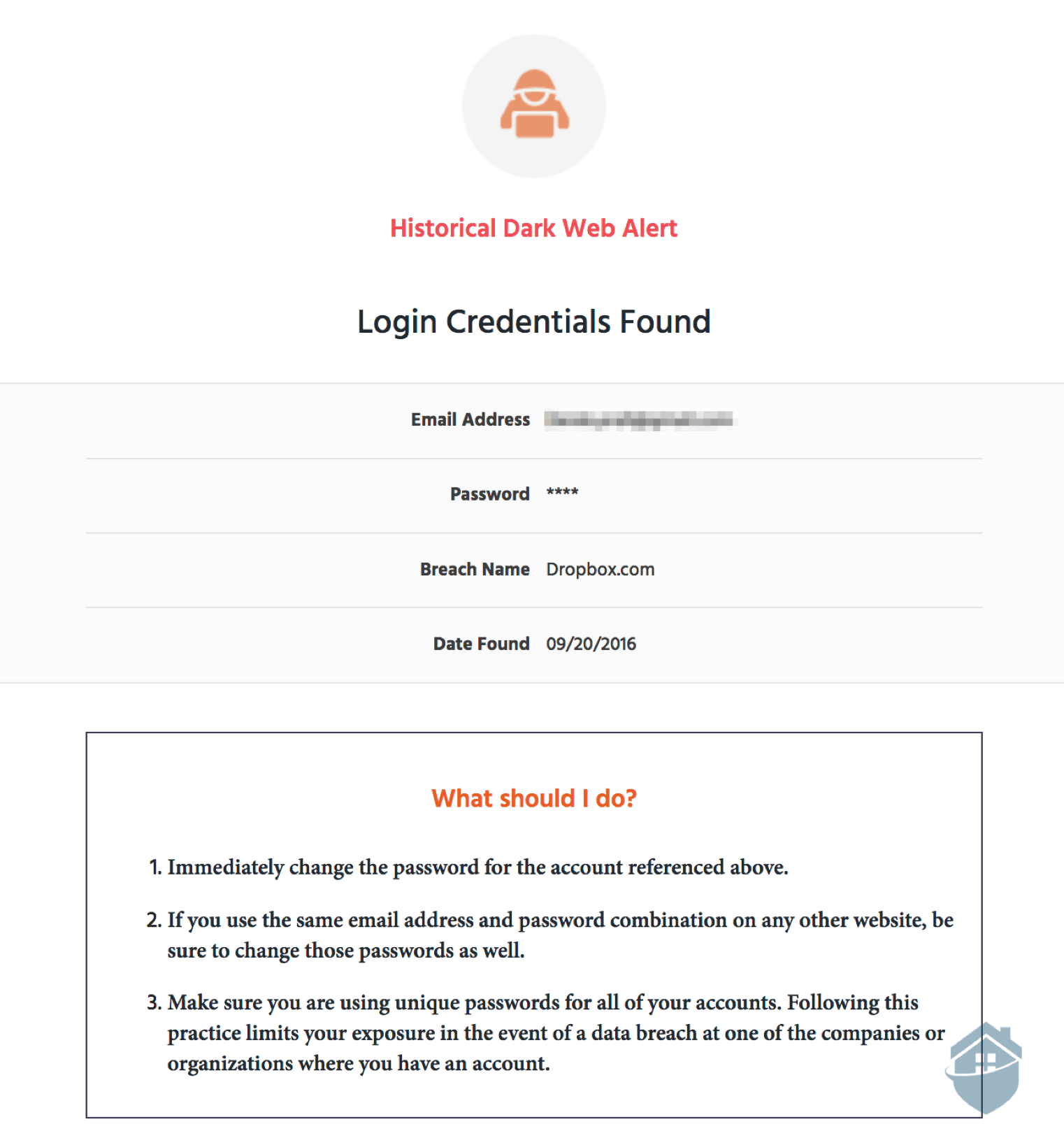
Identity Guard Dark Web Alert Sample Instructions
So that’s that for the purchase, setup, and day-to-day use of Identity Guard. We will say that getting started and learning the ropes was incredibly easy, especially compared to some of the clunkier services we’ve tested. We hit a couple snags here and there, but it was mostly smooth sailing.
Overall, we were blown away with the attention to detail and the robust functionality of Identity Guard, which is why we’ve ranked it number one on our best identity theft protection report for 2025. While the app left something to be desired, the service more than made up for it with the richness of the desktop experience. Add to that all the extras and add-ons, and we were more than satisfied.
While Identity Guard is not the cheapest option out there, we found it to be the most comprehensive, hands down.
Per month, the Value plan is $6.67, Total protection is $11.99, and Ultra protection is $17.99 if you pay yearly. This is fairly standard for the industry, but keep in mind that Identity Guard isn’t one to shy away from offering deals and discounts. If you time your purchase right, you can get discounted rates for a whole year.
Yes, Identity Guard’s coverage varies pretty dramatically between their tiers of protection. Be sure to carefully go over each plan’s offerings before selecting the one that’s right for you.
Unfortunately, no. Identity Guard does not offer a free trial. We’d like to see this added to their policies. However, there’s a money-back guarantee. If you cancel within 60 days of your purchase of an annual subscription, you’ll get your money back.
Yes, but only if you select the Total or Ultra protection tiers.
Yes, Identity Guard does have a mobile app; however, the desktop experience is clearly prioritized.
* The score you receive with Identity Guard is provided for educational purposes to help you understand your credit. It is calculated using the information contained in your TransUnion credit file. Lenders use many different credit scoring systems, and the score you receive with Identity Guard is not the same score used by lenders to evaluate your credit.
** Identity Theft Insurance underwritten by insurance company subsidiaries or affiliates of American International Group‚ Inc. The description herein is a summary and intended for informational purposes only and does not include all terms‚ conditions and exclusions of the policies described. Please refer to the actual policies for terms‚ conditions‚ and exclusions of coverage. Coverage may not be available in all jurisdictions.
Lemonnier, J. and Latto, N. (2019, July 23). How to Create a Strong Password — That You Won’t Forget. AVG. https://www.avg.com/en/signal/how-to-create-a-strong-password-that-you-wont-forget
Oshea, B. (2020, January 24). What Is a VantageScore? NerdWallet. https://www.nerdwallet.com/article/finance/vantagescore-fico-score-the-difference
Unuth, N. (2019, August 12). What is End-to-End Encryption? Lifewire.
https://www.lifewire.com/what-is-end-to-end-encryption-4028873
FBI. (2008). House Stealing: The Latest Scam on the Block.
https://archives.fbi.gov/archives/news/stories/2008/march/housestealing_032508
Marino, J. (2019, November 28). Protection Against Title Theft: What You Need to Know. ThisWeek Community News.
Frankenfield, J. (2020, May 5). Cryptocurrency. Investopedia. https://www.investopedia.com/terms/c/cryptocurrency.asp